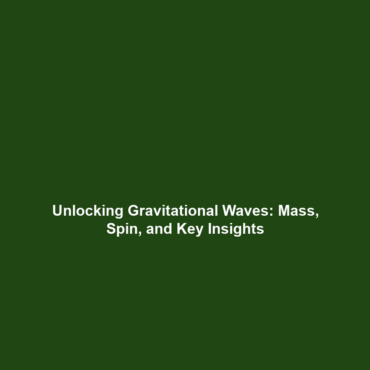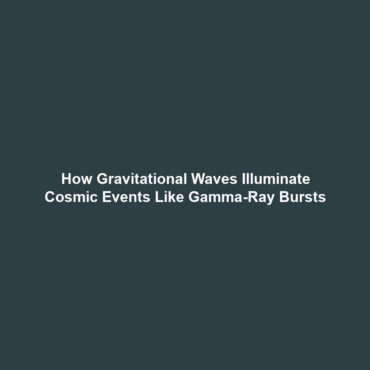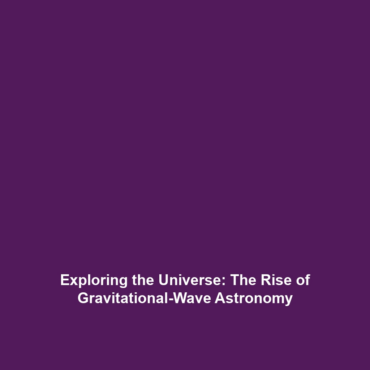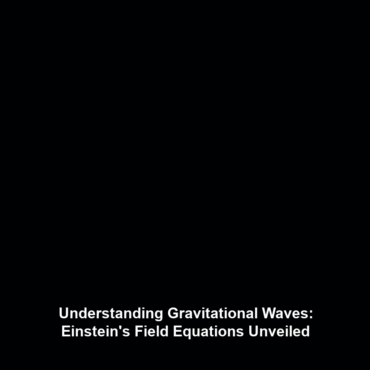Mass, Spin, and Other Characteristics Deduced from Gravitational Wave Data
Introduction
Mass, spin, and other characteristics deduced from gravitational wave data play a crucial role in our understanding of the universe. Gravitational wave astronomy has opened new avenues for exploring the cosmos, allowing scientists to glean insights into the fundamental properties of black holes and neutron stars. By analyzing the gravitational wave signals emitted during the mergers of these massive objects, researchers can infer vital characteristics such as their mass and spin. This emerging field not only enhances our knowledge of gravitational waves but also contributes to the broader context of astrophysics by unveiling the dynamics of celestial events.
Key Concepts
Mass
The mass of black holes and neutron stars can be determined through the analysis of gravitational wave data. When two massive objects merge, the gravitational waves produced carry information about their masses, allowing astrophysicists to estimate these values with remarkable precision.
Spin
Spin is another critical characteristic that can be inferred from gravitational wave observations. The rotation of the objects influences the frequency and shape of the gravitational waves, providing insights into the angular momentum of these massive celestial bodies.
Other Characteristics
Beyond mass and spin, gravitational wave data can reveal additional features, such as the frequency of binary mergers and the distance of the source. This information is vital for understanding the behavior of matter under extreme conditions and contributes to the field of cosmology.
Applications and Real-World Uses
The data derived from detecting mass, spin, and other characteristics from gravitational waves has several important applications:
- Astrophysics Research: Gravitational wave data enhances our understanding of stellar evolution and the life cycle of massive stars.
- Test of General Relativity: Observations provide critical tests of the predictions made by Einstein’s theory.
- Dark Matter Studies: Insights into the population of black holes can inform theories related to dark matter distribution in the universe.
Current Challenges
Despite the advancements in studying mass, spin, and other characteristics from gravitational wave data, several challenges remain:
- Noise and Signal Clarity: Distinguishing genuine gravitational wave signals from background noise is a persistent issue.
- Data Volume: The vast amounts of data generated from gravitational wave detectors can overwhelm analysis methods.
- Interpretation Complexity: Accurately interpreting the characteristics extracted from data requires sophisticated modeling approaches.
Future Research and Innovations
Future research aims to enhance our understanding of mass, spin, and other characteristics through innovative technologies:
- Next-Gen Detectors: Advancements in detector sensitivity will lead to improved measurement of gravitational waves.
- Enhanced Data Analysis Techniques: Machine learning and AI are being employed to more effectively analyze the incoming data streams.
- Deep Space Observations: Potential collaborations with space-based observatories will set the stage for broader gravitational wave detection.
Conclusion
Mass, spin, and other characteristics deduced from gravitational wave data are pivotal in advancing our understanding of the universe through gravitational waves. As research continues to unfold, the implications for astrophysics, cosmology, and fundamental physics become increasingly significant. For further reading, explore our topics on Gravitational Wave Theory and Black Hole Astrophysics.



